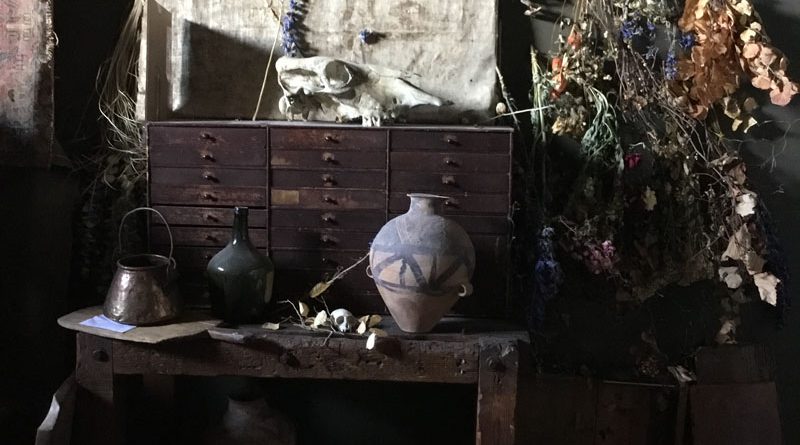Best Art Studio Light
Jackie and Sherrie’s discuss the best art studio light for painting and drawing to best optimize the experience. Listen in and watch as the provide valuable art tips for your craft!
Jackie
Hi Sherrie, good afternoon.
Sherrie:
How are you? You’re in your new place?
Jackie:
I’m in my new place, here we are in Coos Bay, Oregon.
Sherrie:
I know pictures you’ve been sending they’re gorgeous.
Jackie:
I wanted to talk today a little bit about lighting and how your North facing studio inspires you and what we can do to simulate that. How can you help our listeners get the best art studio light from a north facing studio and how we can paint something similar.
Sherrie:
Well, I mean, North light has been chosen for centuries because of its consistency that evolve with natural lights. It’s the most consistent light is it North light. So, if you can at all manage it in your home, we know a lot of people that have commandeered the living room that seems to always be the room that has the best North light. So, a lot of people are taken over their living rooms, but if there’s some way you can get North light, it is really the most beautiful and best art studio light. You can tell from the light hitting my drawings and so forth. All of this going on behind me, you can just see how mysterious and wonderful it is. So, if you can get natural light North light’s the best.
East Light is the Best Art Studio Light
The next best light would be East light because it’s good in the afternoons. West light is actually good in the mornings and South light is the worst, but you could possibly put either kind of sheer curtains in front of it, or tracing paper in front of it and that could diffuse the sunlight. So, those are your options with natural light, but if that’s not possible, you’re in luck because today they make so many bulbs that imitate North light. So, I know you’re going to have a North light studio though and I know you’re working on that right now, so that’s really great. If you could at all manage it, that that’s what you want, but there are bulbs that are available.
Cowboy Lights Recommended
I think, what we use in our workshops is 5,400 Kelvin or 5,500 Kelvin bulbs. It’s the cowboy lights and that makes a really terrific light and actually it’s cool, but it’s a really lovely light to work with as a substitute, and that’s one of your cheapest options, cowboy lights, but there are so many things available on the internet right now. You just have to do a little searching around but there are a lot of lights that you can control it, even from warmer to cooler light, and you can really strike a balance and you can focus the light. It can have the barn doors, so you can actually focus the light onto your subject. So, we’re alive at a good time for people that have trouble getting North light.
Jackie:
Do you feel that it’s more crucial to paint by North light when you’re doing a still life, or if you’re painting a portrait? Is it different, or you still require the same North light.
Sherrie:
Well, if you’re painting indoors, you know, there are a lot of people that like to paint outdoors and paint a model out in the sunlight. If that appeals to you, then that’s natural light and it’s going to change you know. So, when you’re painting outdoors, the light is going to change tremendously, and it does change inside, but not to the degree that it does when you’re outside. In terms of subject matter, it really doesn’t it matter what the subject is of the object is.
The same light on it, it doesn’t matter what the object is really. I mean, the only difference is you can tell behind me that the walls are painted a very neutral kind of gray green. This particular color that we came up with for this studio has a little bit of red in it, which really has neutralized it. So, before I think the wall tended to look more green, but it really is such a beautiful, neutral color and the reason for it being dark as you know, Jackie, is that it makes beautiful light and shadow, which I think you can tell on the objects in the background.
Sherrie:
The light and shadow is very clear to see and if this is the kind of painting that appeals to you, you want to set up you’re painting space so that you can so that you can eliminate a lot of reflection into the shadows, which is happening with a white wall, like you can see behind you. So, they’re in your office.
Jackie:
Where light is bouncing off of all the walls and everything.
Sherrie:
Right and the reason for having it a neutral color is so that everything looks good against it, but that’s the thinking and, you know, the way that David and I really came up with it was the art students, like had their studios painted gray. Now theirs was kind of more of a battleship gray. It wasn’t as pretty a gray and eventually we kept morphing to color until it became this beautiful neutral, you know, nothing color and you can see that, like all the drawings, everything show up beautifully against an object. It just, it creates really dramatic light.
Jackie:
Is there anything else we can talk about concerning the lighting?
Sherrie:
Well, yes. You know, if it’s possible to finagle some sort of highlight, you now you can actually create these dormers.
Jackie:
Yeah, that’s what I wanted to talk to you about. What about the skylight? How does a skylight compare to just a North facing window?
Sherrie:
Well, there are different kinds of skylights. So, some skylights are just on the roof and the roofing flat, you know, there are those kinds of skylights, and those work pretty well. As, you know, LAAFA, the Los Angeles Academy of Figurative Art. They have those kinds of skylights and actually it works pretty well.
I mean, the light comes from on top, but that’s actually a very good solution, you know, and then they have something called, I didn’t think about it before, but Solatube is a way on a flat roof or some sort of, it doesn’t have to be a flat or a pitched roof. It’s a whole, I don’t know, it a whole, yea big, there’s a couple of different sizes, and they can install them pretty quickly and through baffles, it lets the sun, and everything come through baffles. Then what you get is actually a pretty terrific North light, kind of like on a cloudy day.
Solatube Solution
That’s one solution and it’s not expensive either. Solatube, if you just look it up, you’ll see that as one solution. Another one is to really create like a dormer, and it could be at an angle. So, the light would be coming in from the North and it would be like, if this was where your roof was, they would cut a hole so that this window would then shed this light into your space instead of having to raise the entire roof you could have just a whole kind of dormer put on with a window and then the light would stream into the studio.
That’s one way to get it to come from on top, more on top rather than that way. But this is good too. Yeah. Either one, but higher is generally a much more appealing than just a regular light straight across. So, you can kind of see the light on me. So, it’s coming from higher up. It just makes for more beautiful light.
Jackie:
Well, thank you, Sherrie so much for shedding light on this subject.
Sherrie:
Oh, my goodness. Yes.
Jackie:
Okay. Thank you.
RESOURCES for Best Art Studio Light
LIGHTS: Cowboy Lights (most economical option)
LED lighting: Adjustable from warm to cool and has barn doors to focus light.
Roof Dormers: They only show them for pitched roofs, but it can be done on a flat roof as well. Ask your contractor or handyman for adaptation to your roof conditions.




Leave a Reply
You must be logged in to post a comment.